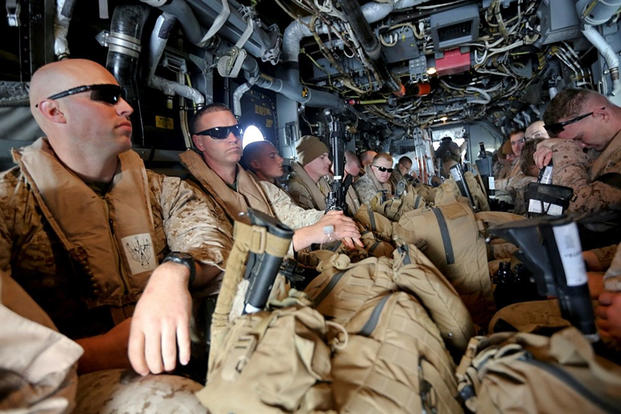The Marine Corps' crisis response task force for Africa will see its air contingent cut in half in 2017 as the service strives to build up aviation readiness at home.
As a result, outgoing task force commander Col. Martin Wetterauer said this month, the unit will be able to take on only one major mission at a time, joint military exercises with other nations will be cut back, and training for pilots deployed with the task force will present a significant challenge.
In a move first announced by Chairman of the Joint Chiefs of Staff Gen. Joseph Dunford during congressional testimony in May, Special Purpose Marine Air-Ground Task Force Crisis Response-Africa -- created following the 2012 attacks on the U.S. consulate in Benghazi, Libya -- is cutting back from 12 MV-22B Ospreys to six and from six C-130 Hercules aircraft to three in the new year.
As that takes place, Wetterauer said during a briefing near Washington, D.C., on Dec. 15, the capacity of the unit will change.
"[The reduction in aircraft] doesn't change our ability to conduct the mission, but it changes the ability to conduct multiple missions," he said.
The effects of this coming limitation were highlighted by a mission the task force took on in July and August, as violent clashes between rival factions of the Sudanese People's Liberation Army in South Sudan threatened to force an evacuation of the U.S. Embassy in Juba.
At the behest of the State Department, the task force sent a 200-man contingent with four V-22 Ospreys and three C-130s into Entebbe, Uganda, less than two hours away from Juba, to remain on standby for a potential evacuation. The Marines ended up spending more than 60 days at the austere staging position in Entebbe, during which time training, manning and logistics readiness declined significantly, a task force official said.
"When we were down there, we were able to be in Entebbe ... and I also had the alert force ready to do other things if needed," Wetterauer said. "That will go away."
The South Sudan standby mission also emphasized the task force's inherent limitations and the need to communicate clearly with State Department personnel going forward about how the unit is best suited to be used, Wetterauer said, noting that the Benghazi attacks had introduced a new way of thinking about crisis response that many are still becoming familiar with.
For a mission such as embassy reinforcement and evacuation, he noted, there are a range of force options, most of which existed prior to 2012. The military can send in an additional detachment of Marine security guards, or a FAST company, a Marine Corps anti-terrorism unit that has quick response capabilities, but is stationed a significant distance away in Rota, Spain.
"The Marine Corps is really taking a look at that in itself, on how do we reorganize FAST to really do what these [Marine air-ground task forces] are doing, since it is in line with their mission," Wetterauer said.
The crisis response task force, he noted, can move fast and stage units forward for quick response, but is not suited to lengthy standby missions or non-military maneuvers.
"It's really an education process, since this is a new normal tasking for those guys," he said. "We would argue, in some cases, you probably don't need the [task force]. You might need something that looks a little bit different. But if you want guys that are wearing civilian clothes and getting off civilian planes with their weapons in a pelican case, you probably need to call somebody else. And don't call us and ask us to do that. So it's just an education process."
While theater security cooperation exercises will continue with fewer aircraft, Wetterauer said, the unit will be able to conduct fewer military-to-military partnership training events in Europe, where the task force is based in Moron, Spain, and Sigonella, Italy, when not staged forward on the African continent.
Another concern for future task force commanders, Wetterauer said, is keeping pilots trained and ready with fewer aircraft to fly.
"If I have six aircraft, I can always account for two being down or in some sort of phase," he said. So I've got four aircraft, two to take the mission, and then two are my backup aircraft. So I'm having to fly by backup aircraft to conduct needed maintenance or flight profiles and training. So that's the number one concern I have going forward with a reduced footprint."
Across the Marine Corps, pilot readiness has been a top concern this year as aging aircraft reach the end of their service lives or need additional maintenance, and deployment tempos stay high.
The commandant of the Marine Corps, Gen. Robert Neller, has said that while flight hour averages have improved from lows earlier this year, he is still not satisfied with the status quo and is committed to increasing aviation readiness across the Corps.
-- Hope Hodge Seck can be reached at hope.seck@military.com. Follow her on Twitter at@HopeSeck.



























